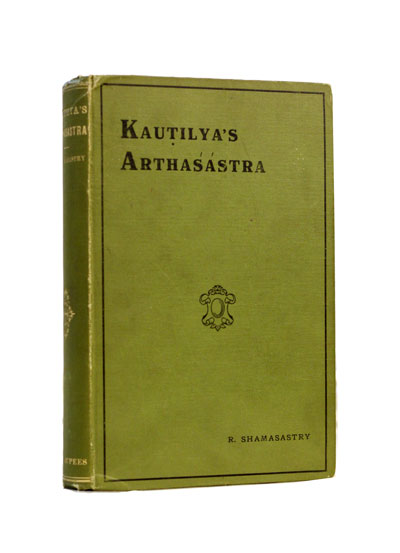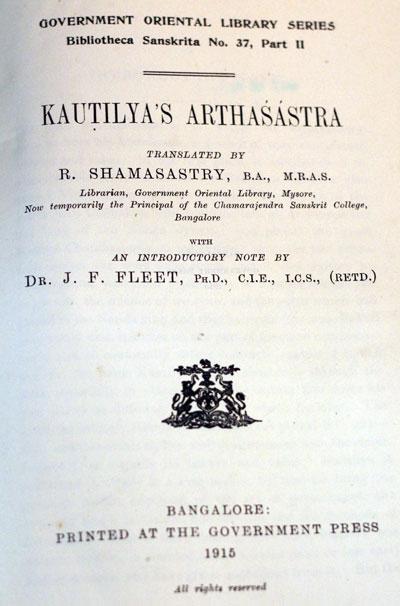One of the most important treatises on political science in the ancient world, along with Sun Tzu’s “The Art of War”.
The Arthashastra (Sanskrit: अर्थशास्त्र, IAST: Arthaśāstra) is an ancient Hindu treatise on statecraft, economic policy and military strategy, written in Sanskrit. Likely to be the work of several authors over centuries, Kautilya, also identified as Vishnugupta and Chanakya, is traditionally credited as the author of the text. The latter was a scholar at Takshashila, the teacher and guardian of Emperor Chandragupta Maurya.
Composed, expanded and redacted between 2nd century BCE and 3rd century CE, the Arthashastra was influential until the 12th century, when it disappeared. It was rediscovered in 1904 by R. Shamasastry, who published it in 1909. The first English translation, this edition, was published in 1915.
The title “Arthashastra” is often translated to “the science of politics”, but the book Arthashastra has a broader scope. It includes books on the nature of government, law, civil and criminal court systems, ethics, economics, markets and trade, the methods for screening ministers, diplomacy, theories on war, nature of peace, and the duties and obligations of a king. The text includes ancient economic and cultural details on agriculture, mineralogy, mining and metals, animal husbandry, medicine, forests and wildlife.
The Arthashastra explores issues of social welfare, the collective ethics that hold a society together, advising the king that in times and in areas devastated by famine, epidemic and such acts of nature, or by war, he should initiate public projects such as building irrigation projects, building forts around major strategic holdings and towns, and exempt taxes on those affected. The text was influential on other Hindu texts that followed.



